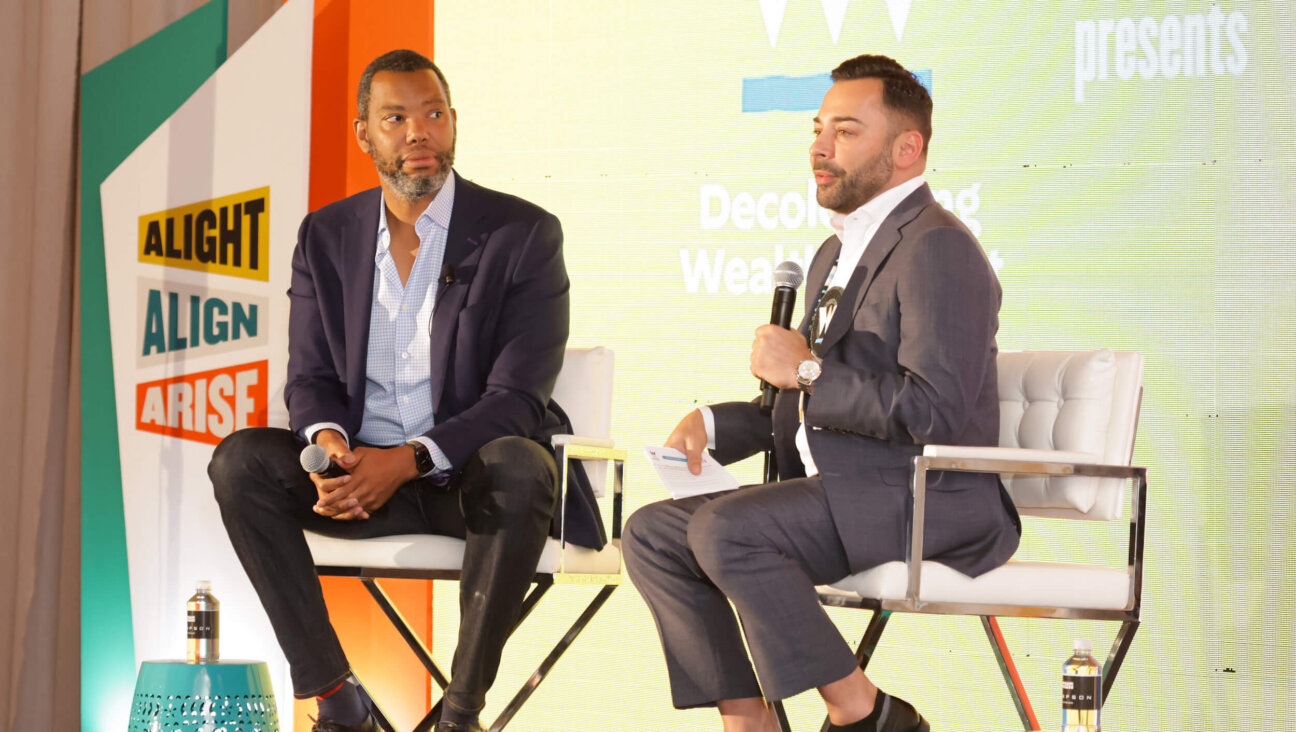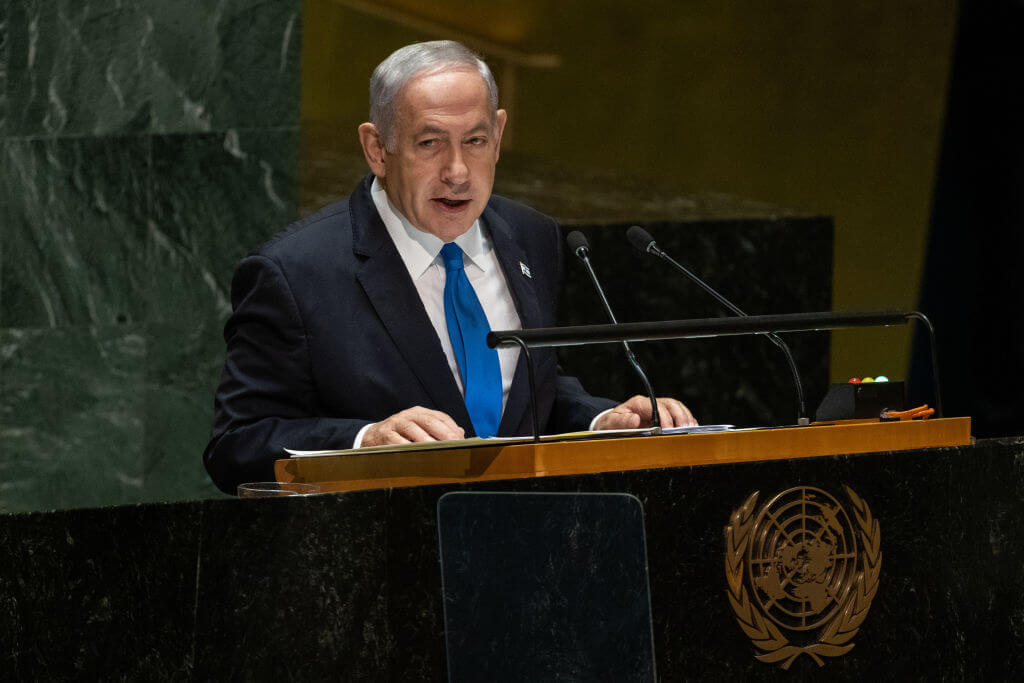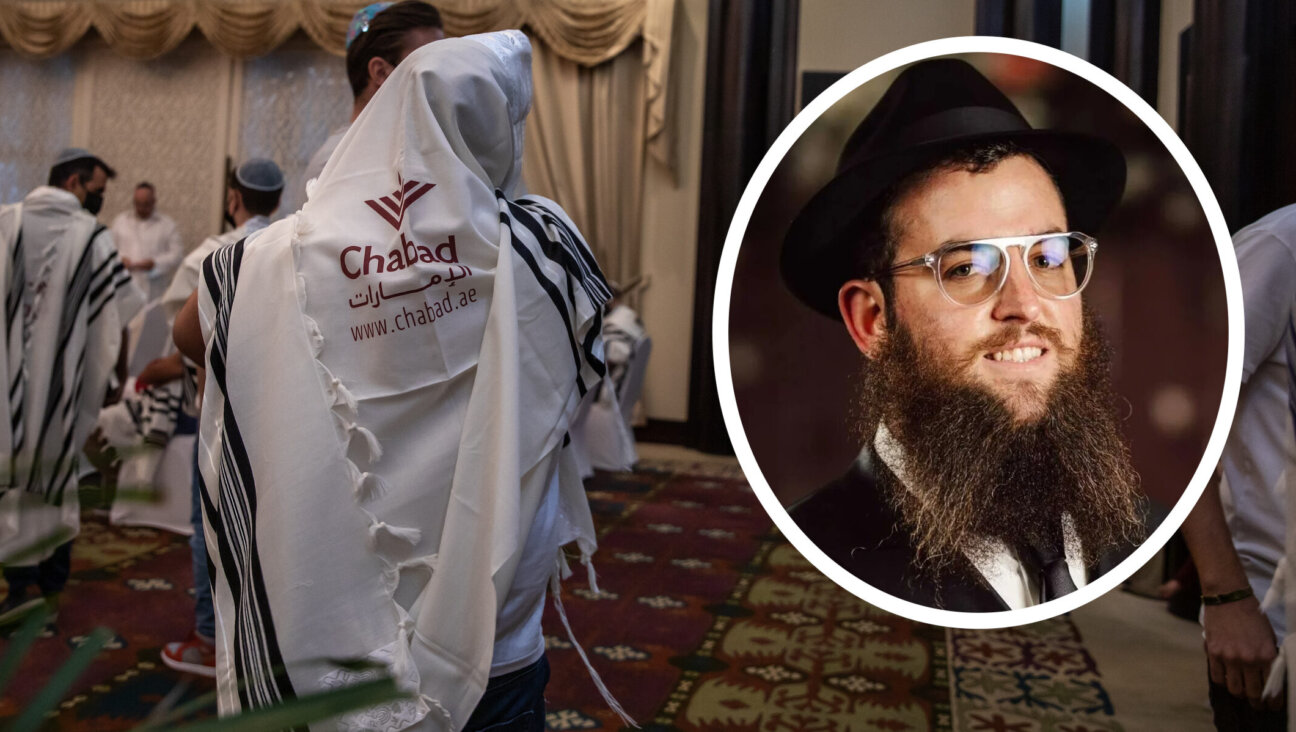Judaism Is Not Just For Jews: The Lesson Of Interfaith Families

Chelsea wed Marc Mezvinsky in 2010. Image by Getty Images
Now that nearly three out of four marriages among non-Orthodox Jews are interfaith, 84% of new households that include at least one non-Orthodox Jew are interfaith households. That means that the future vitality of every aspect of liberal Judaism depends on engaging increasing numbers of interfaith families in Jewish life. Yet instead of discussion of the issue in Jewish organizations and media, there’s deafening silence.
The silence around interfaith life from the organized Jewish world is doubly frustrating given the challenge that interfaith couples face — and in particular, the partners from different faith traditions. Many doubt that they can belong in Jewish groups, organizations and communities. That’s because in the traditional view, Judaism is for Jews; what matters is “being” Jewish, being part of the Jewish people. Those who identify as Jews are “in,” while a partner who is not a Jew is “out” or “other.”
Despite recent suggestions to the contrary, the truth of the matter is, interfaith couples don’t feel completely welcome. Many report an undercurrent of disapproval or feel they are treated as outsiders. Moreover, welcoming interfaith couples is a necessary first step.
But by itself, it is insufficient, a distinction that has been drawn by advocates for every other marginalized Jewish group. Take the Reform Movement’s resolutions concerning LGBTQ and transgender/gender non-conforming people, and people with disabilities: It commits to “integrate fully all Jews into the life of the community regardless of sexual orientation” and to “welcoming communities of meaningful inclusion, enabling and encouraging people with disabilities and their families to participate fully in Jewish life in a way that promotes a sense of personal belonging for all individuals.” It also insists upon the Reform Movement’s “commitment to the full equality, inclusion and acceptance of people of all gender identities and gender expressions.”
But the movement’s latest resolution on interfaith marriage commits only to welcoming interfaith families and partners from different faith backgrounds, while also encouraging conversion.
Like every other marginalized group, it stands to reason that interfaith couples will not stay unless they are made to feel that they truly belong.
How can people who are not Jews feel that they truly belong in Jewish communities? That is the challenge of our time, and overcoming it requires a new understanding of interfaith marriage, and adapted attitudes and policies that support full inclusion.
First, we need to understand the foundational covenant as being not between God and the Jewish people, but between God and the people who are Jewishly engaged. Judaism is not just for Jews; it is for people who are “doing” Jewish, whether or not they identify as Jews, in a community that consists of other Jewishly-engaged people. This is radical, because it stands the traditional view on its head.
A rabbi told me once that it didn’t make sense for someone to say, “I live Jewishly but I’m not a Jew.” We need a new understanding of interfaith marriage in which that makes perfect sense.
Second, inclusion requires an adaptation of underlying attitudes towards the marginalized group. In the context of interfaith marriage, full inclusion means considering interfaith families as equal to inmarried families, and partners from different faith backgrounds as equal to Jews.
Unfortunately, examples of expressions of negative attitudes abound, including the “missing mazel tov” when Jewish leaders described Chelsea Clinton’s wedding as not a Jewish event; “expert” assumptions that Mark Zuckerberg’s intermarriage meant his children would not be Jewish (which later was disproved); denunciations from Israel of intermarriage as a “plague” or “catastrophe.”
We have quite a way to go before we consider partners from different faith traditions as equal. Even expressing a preference that our children marry Jews delivers a message of disapproval to the 72% of them who will intermarry anyway. Feeling disapproved of is not conducive to feeling belonging.
Third, inclusion requires adaptive change in the established system. In the context of interfaith marriage, adaptive change means not just considering, but treating interfaith families and partners from different faith backgrounds as equal.
What leadership roles can partners from different faith backgrounds take? In what rituals can they participate? How will we explain those policies and communicate our invitations to engage?
When Jews and Jewish organizations are fully inclusive, interfaith couples and the partners from different faith backgrounds can feel like they truly belong. With a new understanding of interfaith marriage, and adapted attitudes and policies, we can make this happen and secure the liberal future.
Edmund Case, the retired founder of InterfaithFamily, is the president of the Center for Radically Inclusive Judaism, publisher of his book Radical Inclusion: Engaging Interfaith Families for a Thriving Jewish Future. Contact him at [email protected].
A message from our CEO & publisher Rachel Fishman Feddersen

I hope you appreciated this article. Before you go, I’d like to ask you to please support the Forward’s award-winning, nonprofit journalism during this critical time.
We’ve set a goal to raise $260,000 by December 31. That’s an ambitious goal, but one that will give us the resources we need to invest in the high quality news, opinion, analysis and cultural coverage that isn’t available anywhere else.
If you feel inspired to make an impact, now is the time to give something back. Join us as a member at your most generous level.
— Rachel Fishman Feddersen, Publisher and CEO
























